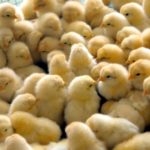The key to preventing diseases from getting into your poultry farm is biosecurity.
Biosecurity in kienyeji chicken farming or any other poultry farming system refers to set of management practices that have been designed to limit or prevent the entry of diseases into the poultry farm. Good biosecurity is essential to successful animal husbandry and good productivity in your poultry enterprise.
Biosecurity is the most effective and also the cheapest mode of disease control in a poultry farm. It ensures that the health as well as the wellbeing of the birds is taken care of and this has the impact of reducing the performance and immunity of your poultry flock.
Every single poultry farmer must ensure that they have put in place strong biosecurity plans that will help keep out the diseases out of the poultry farm. Infectious diseases are usually introduced into the poultry farm in a number of ways. These include the following:-
- Through the introduction of carrier or sick birds.
- Through the visitors’ or farmers’ shoes, clothing or vehicles.
- Through poor disposal of the poultry carcasses and litter.
- Through contamination in the drinking water that is provided to the birds.
- Via rodents and wild birds.
- Through egg transmission
- Via contaminated feeds and the feeding equipment
- Via the farmers’ pets
- Through airborne infections
For you to put in place an effective biosecurity plan that will help prevent the entry of diseases into the poultry farm, there are three important aspects that you will need to factor in. These include the following:-
- Isolation
- Control of human traffic
- Proper Sanitation
Isolation can be done in multiple ways in order to offer optimal biosecurity for your kienyeji chicken. The basic purpose of isolation is to confine the birds in a controlled environment while keeping all the other birds and animals out. The isolation can be achieved in a number of ways:-
- Through the construction of fences
- Incorporating an all-in-all-out poultry management: the birds should be kept as a flock from the day they are introduced into the poultry farm to the day they are slaughtered. They shouldn’t be mixed with new flocks. After the slaughter, the house should be washed thoroughly and be disinfected and left vacant for at least two weeks before a new set of birds is introduced. This will ensure that all the pathogens have been killed before they infect the new flock.
- New birds that are incorporated into the poultry house are likely to be carriers. In case you plan to introduce new birds into the poultry house, make sure that you put them in an isolation unit away from the resident birds. An introduction of new birds into the house may end up wiping out your entire flock. The new birds introduced into the poultry house need to be isolated for between two and four weeks. During this duration, you should observe the birds for any signs of diseases and then treat these as soon as possible.
- Make sure that you handle the new birds introduced into the farm after you have handled all the other birds. You should also take measures that you obtain the new birds from a reputable supplier who takes extra measures to vaccinate birds and observe proper biosecurity in their farming practice. If you procure your birds from a reliable breeder, chances are that you are going to get high quality disease-free birds.
- Birds of the same species and which are of the same age should be grouped together. There are certain chickens that may be carriers or resistant to diseases and these may be harmful to other chickens in your farm that are of a different species.
- Take proper biosecurity measures in order to keep the wild birds and rodents away. The rodents will spread diseases into the farm through their secretions and droppings. You can keep these from your poultry farm by installing wire nets or chicken wire. You should also ensure proper cleanliness and minimize spillage as much as possible. Make sure that there are no dams close to the poultry house as this may likely attract water birds.
- To keep the birds from stress, ensure that you clear the bushes and shrubs that are situated around the poultry house as these may provide hiding places for some predators and various wild animals.
Human Traffic Control
Human beings pose the biggest risk to the spread of diseases. They can transfer diseases through a number of ways including through their shoes, equipment, hands and clothing among others. You should control how people get into the farm and put in place sanitation measures that will help minimize the spread of diseases.
Download Kienyeji Chicken Farming Manual for additional tips on profitable kienyeji chicken farming.
